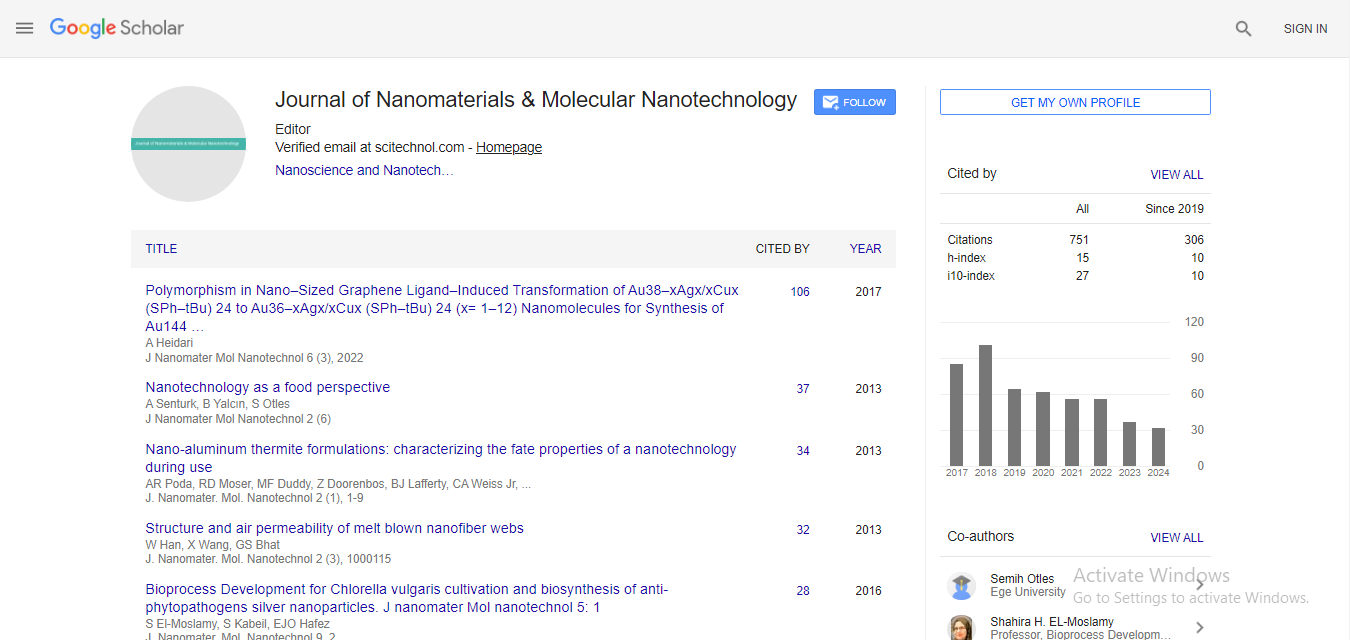Copper-chitosan fused nanoparticles as a potent fungicidal agent against fungal phyto-pathogens
Abhishek Mathur, Akshma Koul and Juhi Hattewar
NCS Green Earth Pvt. Ltd., India
: J Nanomater Mol Nanotechnol
Abstract
Metal NPs have attracted considerable attention as an antimicrobial agent due to their high surface area to volume ratio, which allows NPs to be effective in very small amounts. An increasing interest in Cu-NPs arises from the useful properties of this metal (thermal and electrical conductivity), which is achieved at a much lower cost compared to other noble metals like silver and gold. Cu is known to have antibacterial and antifungal properties; also it is nontoxic to mammals. These properties thus make Cu-NP synthesis an attractive area. A number of methods for producing Cu-NPs have been developed using both physical and chemical approaches, which involve elevated temperatures, inert atmospheres, the large number of surfactants and organic solvents. However, the major limitations in the synthesis of CuNPs are their ease of oxidation to CuO or Cu2O during preparation and storage. Therefore, alternative methods have been developed to synthesize CuNP in the presence of polymers and surfactants as a stabilizer. There are some recent reports on a successful synthesis of Cu-NPs in aqueous solution, using chitosan which involves additional reducing and stabilizing agents at various steps that are associated with environmental toxicity. In the green synthesis method, preparation of Cu-NPs, colloidal stability in aqueous media using chitosan, a biopolymer as a reducing and capping agent. The choice of chitosan as a stabilizer of the Cu-NPs is because of its ability to chelate metals, which makes a perfect material for metal NP synthesis. The synthesis of NPs using polymer has been promising due to their ease of processing, solubility, biocompatibility, less toxicity and also because of the possibility of controlling the growth of the resulting NPs. The studies demonstrated that hydrophilic side chains of chitosan play a fundamental role in stabilization and dispersion of NPs, preventing their agglomeration. Chitosan can co-ordinate metal ions (eg. Cu ions) before reduction. When Cu salts dissolve in acidified chitosan solution, Cu ion binds to the polymer chains via amino groups. The reduction of these ions takes place further, coupled with the oxidation of the hydroxyl groups. Thus NPs generated are strongly attached to the chitosan due to the chemical bond between the electron-rich nitrogen present in the amino groups of the polymer and copper. The use of biopolymer as capping and or reducing agents represents an environmentally friendly alternative to hazardous organic solvents. The present study suggests the utility of Copper-chitosan fused nanoparticles as an effective fungicidal agent against phytopathogens. The results showed that these particles are effective at three sprays at an interval of every 7 days and at thrice a month frequency.
Biography
E-mail: abhishekmthr@gmail.com
 Spanish
Spanish  Chinese
Chinese  Russian
Russian  German
German  French
French  Japanese
Japanese  Portuguese
Portuguese  Hindi
Hindi 



